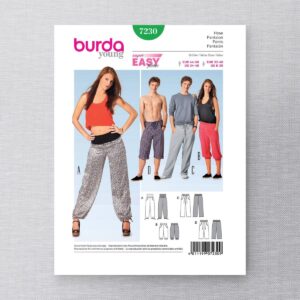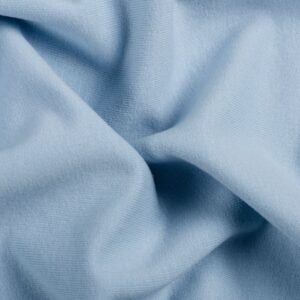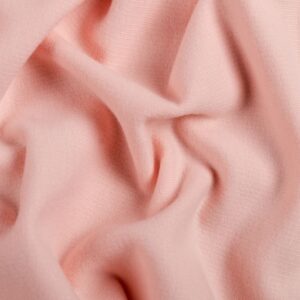
It’s starting to feel like fall, and it won’t be long before the cooler days arrive. Fleece is therefore a must to make the most of our days out in nature or simple afternoons spent cocooning.
When we talk about “fleece” in sewing jargon, we mean a thick knitted fabric with a brushed side, or a polar fleece that’s ideal for making sweatshirts and sweatpants. Cotton fleece can comprise a variety of materials, but it’s usually made from a mixture of cotton and polyester. You’ll find a selection of printed, heathered and plain fleece to suit all your projects. . You’ll love the way it falls and how soft it is. And I’m not even going to mention the INCREDIBLE range of colours it comes in—which I can’t choose from!
What about rib knit?
Want to make your sweatshirts and sweatpants out of a rib knit? Check out our selection! Our favourite our new Cloud rib knit, which goes perfectly with the Cloud fleece made of bamboo rayon, cotton and elastane.
Tips & tricks
Here are some tips and tricks to help you work with fleece.
- Use a knitting needle to avoid pulling stitches from your fleece. Opt for a larger needle if your fleece is thick and a smaller needle if your knit is thinner. We love the Schmetz Stretch ballpoint needle for its versatility with all types of fibres.
- Avoid ironing fleece, so that you don’t flatten your knit too much. If you want to flatten a seam, use the tip of your iron directly on the seam.
- Use clear elastic to stabilize shoulder seams and other stretching points.
- Fleece is best washed by hand and laid flat to dry. If you want to wash it in the machine once it’s finished, wash your fabric before cutting it in the same cycle you want to use once the garment is finished.
- Fleece is a fabric that tends to pill. To avoid this, you can wash your fabric and finished garment in a bag to keep it from rubbing against other clothes. You can also use the delicate cycle.
- If you want to stiffen a piece of your knit, use a knitted interlining so you don’t lose the stretch of your fabric.
- Opt for a four-thread overlock or zigzag stitch to avoid losing any stretch in your knitted fabric. Overlocking will also give your garment a nice finish.
- Finish your necklines, edges and sleeves with a nice rib knit or coverstitch. If you don’t have these features on your machine, opt for an overlock or zigzag stitch, then flip the piece over and double-stitch with a double needle.
- When cutting your knit fabric, use needles placed inside the seam allowances, outer notches or a pencil line to make your markings rather than a regular notch, to prevent your knit from unraveling.
- To keep the knitted fabric from stretching when sewing, opt for a walking foot. If you don’t have one, reduce the tension on your foot to reduce stretching.
- While sewing, try to hold the pieces in place without the risk of making small holes in the knitting. They won’t slow you down, as they are very easy to remove.
Project ideas
Our favorite fleeces
Share your creations using the #thefabricclub
*Availability may differ from store to store







